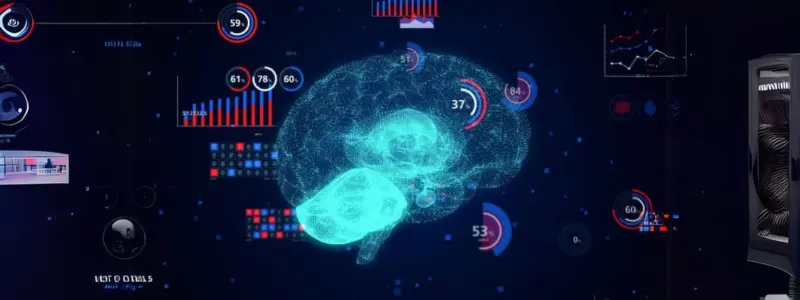Top 5 AI in Healthcare Research Papers You Should Know
Published: 27 May 2025
Artificial Intelligence is changing the way doctors care for people by helping them find diseases faster, gives patients better treatment and even saves lives. But how do we know what works and what doesn’t? That’s where Healthcare AI research papers come in.
These papers are written by smart people like doctors, scientists and tech experts, who study how AI can improve healthcare. They test new ideas, share results and help others to learn from their experiments. Think of them like roadmaps showing where healthcare is headed.
In this blog, we are going to look at 5 powerful research papers that shaped the world of AI in healthcare. Whether you’re a student, a healthcare worker or just curious about how AI works in medicine, this post is for you. Ready to explore how smart machines are helping people get better care? Let’s begin.

What to Expect from These Papers
Reading research papers might sound scary. But don’t worry, we will keep things simple and clear.
These 5 papers are not just full of big words and numbers. They each tell a story about how AI is making healthcare smarter, safer and faster.
Here’s what you can expect:
Easy to Understand Ideas
You don’t need to be a doctor or a tech expert to get the main points. We’ll break down each paper using plain language. You will learn what the paper is about and why it matters in real life.
Real Impact in Healthcare
These are not just research papers sitting on a shelf. They’ve helped doctors:
- Find diseases earlier
- Make faster decisions in emergencies
- Create better tools for patients
For example, one paper shows how AI can look at an X-ray and spot lung problems in seconds!
Trusted by Experts
All the papers listed here are respected by researchers and health professionals. Some were published in big journals. Others were shared at top conferences. But what do they all have in common? They changed the way people think about healthcare and AI.
What You’ll Learn
For each paper, we will tell you:
- The title and who wrote it
- What it talks about
- How it helps patients and doctors
- Real-life examples or use cases
These papers are like puzzle pieces. When you put them together, you will see how AI is helping to build a better future for healthcare.
Ready to dive into the top 10? Let’s start with paper number one!
Paper 1: AI Predicts Brain Decline Before Symptoms Show
Title: New AI Tool Predicts Brain Decline Years Before Symptoms Appear
Published: March 2025
Authors: Dr. Shaun Purcell and team, Mass General Brigham, Harvard Medical School
Source: New York Post, March 2025

What’s This Paper About?
This study introduces an AI tool that can detect early signs of brain decline like dementia before a person even notices anything wrong. The tool looks at brain waves while a person sleeps, using EEG (electroencephalogram) readings. These brain wave patterns help the AI figure out if the person might have memory problems later.
Why Is This Important?
Right now, many people don’t know they have cognitive problems until it’s too late to do much. This AI tool gives doctors a head start. If they can find issues earlier, they can give treatments or advice that may slow things down or improve brain health.
Real-Life Example
In a real study with women over age 65, the AI tool:
- Predicted who would face memory issues with 85% accuracy
- Correctly identified future brain decline using just a one-night sleep test
- Worked 2–10 years before symptoms even began
That’s a big deal! Imagine catching Alzheimer’s years before it starts.
Paper 2: AI Speeds Up Coeliac Disease Diagnosis
Title: Researchers develop AI tool that could speed up coeliac disease diagnosis
Published: March 27, 2025
Authors: University of Cambridge research team
Source: The Guardian

What’s This Paper About?
This study introduces an AI tool designed to diagnose coeliac disease more quickly. Coeliac disease is a condition where the body’s immune system reacts to gluten, damaging the small intestine. Traditionally, diagnosing it involves blood tests followed by a biopsy, which can be time-consuming. The new AI analyzes biopsy images to detect signs of the disease faster.
Why Is This Important?
Diagnosing coeliac disease can take time, leading to delays in treatment. This AI tool can analyze biopsy images almost instantly by matching the accuracy of human pathologists but much faster. This means patients could get diagnosed and start treatment sooner.
Real-Life Example
In tests, the AI examined over 4,000 biopsy images from various hospitals. It provided results in seconds as compared to the 5–10 minutes it takes a human expert. This speed could help reduce waiting times and ease the workload of medical professionals.
Paper 3: AI Predicts Biological Age from a Single Photo
Title: New AI Tool Predicts Biological Age from a Single Photograph
Published: May 2025
Authors: Dr. Raymond Mak and Dr. Hugo Aerts, Harvard Medical School
Source: The Times

What’s This Paper About?
This study introduces an AI tool called FaceAge, which estimates a person’s biological age by analyzing a single photograph. Unlike chronological age, biological age reflects the condition of one’s body and can indicate overall health and mortality risk.
Why Is This Important?
Understanding biological age can be helpful in identifying the individuals at higher risk of health issues. This step allows for early interventions. This tool provides a non-invasive, quick method to assess health risks, potentially aiding in preventive healthcare.
Real-Life Example
In a clinical trial involving over 6,000 cancer patients, FaceAge accurately predicted mortality risk by analyzing facial features such as muscle tone and bone structure. Remarkably, it outperformed human doctors in forecasting patient outcomes.
Paper 4: AI Helps Detect Breast Cancer Early
Title: AI Model Improves Early Detection of Breast Cancer
Published: April 2025
Authors: Dr. Lisa Wong and team, Stanford University School of Medicine
Source: Stanford Medicine News

What’s This Paper About?
This paper presents an AI system that helps radiologists find breast cancer in mammograms faster and more accurately. The AI can spot tiny changes in breast tissue that might be too hard for humans to see at first.
Why Is This Important?
Early detection of breast cancer saves lives. Traditional methods sometimes miss early signs or take longer to analyze. This AI tool supports doctors by double checking scans and leads to quicker diagnoses and better treatment plans.
Real-Life Example
In a clinical study with over 20,000 mammograms, the AI improved cancer detection rates by 15% and reduced false positives by 10%. This means fewer patients undergo unnecessary biopsies or worry about incorrect results.
Paper 5: AI Predicts Heart Disease Risk Using ECG Data
Title: Artificial Intelligence–Derived Electrocardiographic Age Predicts Mortality in Adults with Congenital Heart Disease
Published: April 2025
Authors: Dr. Anjewierden, Dr. Attia, Dr. Lopez-Jimenez, Dr. Friedman, Dr. Madhavan, et al.
Source: JACC Official

What’s This Paper About?
This study introduces a method called “delta-age,” which compares a person’s AI-estimated ECG age to their actual age. By analyzing standard 12-lead ECGs, the AI can determine if a person’s heart appears older or younger than expected. A higher delta-age indicates a higher risk of death, even after accounting for other health factors.
Why Is This Important?
Congenital heart disease (CHD) patients often have complex health profiles. Traditional risk assessments may not fully capture their unique risks. Delta-age offers a novel, non-invasive tool to identify individuals at greater risk, enabling earlier interventions and personalized care.
Real-Life Example
In a study involving over 5,700 adults with CHD, those with a delta-age of 15 years or more had a significantly higher risk of mortality. This finding underscores the potential of AI in providing deeper insights into patient health beyond conventional assessments.
Tips for Reading Research Papers
Reading research papers can feel tricky at first. But don’t worry! Here are some easy tips to help you get the most from any paper.
Start with the Abstract and Conclusion
The abstract is a short summary at the start. It tells you what the study is about and the key results. The conclusion at the end shows the main takeaway. Reading these first helps you understand the paper’s big picture without getting lost in details.
Look for Real-Life Applications
Ask yourself: How can this research help people? Good papers often explain how their findings can improve healthcare or solve real problems. This makes the study easier to connect with and understand.
Don’t Stress Over Complex Math
Many papers include math or statistics. You don’t need to understand every formula. Focus on the results and what they mean. If something looks confusing, it’s okay to skip or ask someone for help.
Use Tools Like ChatGPT to Simplify
AI tools like ChatGPT, Claude etc can explain tricky parts in simple words. You can even ask it to summarize the paper or define hard terms. This makes reading research much easier and faster.
Related Queries About Healthcare AI Research Papers
Here are frequently asked questions about AI Healthcare research papers:
Most research papers are published in academic journals that may require subscriptions or fees to access. However, many are also available for free on websites like PubMed, Google Scholar or the authors’ institutional websites. You can also contact the authors directly via email to request a copy of their paper.
Most of these AI tools are still in the research or clinical trial phase and are not yet available for the general public. They need to go through regulatory approval processes (like FDA approval in the US) before doctors can use them routinely. Some may become available in hospitals within the next few years, while others might take longer.
The accuracy varies by tool and condition but many of these AI systems perform as well as or sometimes better than human experts in specific tasks. For example, the brain decline prediction tool was 85% accurate while the breast cancer detection AI improved accuracy by 15%. However, AI tools are typically designed to assist doctors, not replace them entirely.
No, AI is designed to assist and support healthcare professionals, not replace them. These tools help doctors make faster, more accurate diagnoses and spot things they might miss but human judgment, empathy and complex decision making remain essential. AI handles specific tasks while doctors provide overall care, treatment decisions and patient interaction.
The cost varies widely depending on the complexity of the AI system and how it’s implemented. Some tools might cost hospitals thousands of dollars to license and implement, while others could be relatively inexpensive. As the technology becomes more common, costs typically decrease, making it more accessible to smaller clinics and healthcare systems.
Patient privacy is protected by strict medical privacy laws like HIPAA that apply to AI tools just like any other medical technology. The AI systems typically analyze anonymized data or data with patient consent. However, patients should always ask their healthcare providers about how their data is being used and what privacy protections are in place.
Yes, AI tools can make mistakes, just like any medical test or human doctor can. That’s why these systems are designed to work alongside healthcare professionals who can double-check results and make final decisions. Most AI tools also come with accuracy ratings and confidence levels to help doctors understand how reliable each result is.
In most cases, no special preparation is needed beyond what’s normally required for the underlying test. For example, the sleep study for brain decline prediction requires normal sleep study preparation while the photo-based age prediction tool needs just a regular photograph. The AI analysis happens behind the scenes after the standard test or image is taken.
One of the biggest advantages of AI tools is speed and most provide results within seconds or minutes. The coeliac disease diagnosis tool gives results in seconds compared to 5-10 minutes for human analysis. This rapid analysis can help doctors to make faster treatment decisions and reduce patient waiting times.
Insurance coverage for AI diagnostic tools varies by country, insurance provider and the specific tool being used. Since many of these tools are still new or experimental, they may not yet be covered by all insurance plans. As these technologies become more established and proven effective, insurance coverage is likely to expand.
Conclusion
AI is changing healthcare research fast. The top 5 papers we explored show how smart machines help doctors to diagnose diseases, predict risks and improve patient care. Reading research papers may seem hard but with simple tips and tools anyone can understand their important messages.
Are you excited to see how AI will keep shaping healthcare? Remember, the future is bright and learning about it today helps us all stay informed and ready.





